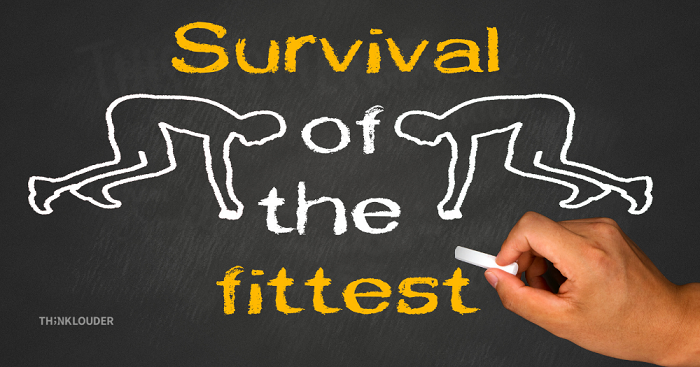Survival of the Fittest: How Agile Organizations Thrived Through the Pandemic
The COVID-19 pandemic caused massive disruptions to businesses worldwide, marking a fundamental change in the way many businesses operated. When put in a situation of adapt or die, some businesses were able to not only survive but thrive, while others shut their doors for good.
The organizations which shifted quickly and were able to rapidly iterate their business models were able to grow, while competitors who lagged behind saw their market share shrinking due to their inability to adapt to the uncertainty and complexity of rapidly changing markets.
Those that thrived were Agile-enabled businesses. As its name suggests, Agile is an evolving methodology that can serve businesses in all niches. Here’s how they won big:
– Embracing uncertainty — businesses that embraced the uncertainty and risk of a rapidly shifting environment were able to commit themselves to continuously iterating and evolving themselves together with market and pandemic conditions.
– Focusing on customers — quickly receiving as much feedback as possible and swiftly turning it into new products or product updates.
– Being flexible — changing project requirements, expectations, or processes (even if it was late in development) to keep consumer benefits front and center.
– Ensuring consistent quality — never sacrificing quality in the name of speed or efficiency, since providing high quality goods retains consumer loyalty.
– Putting people first — the pandemic disrupted not only businesses but the personal lives of every organizational employee. Companies that were able to empathize with and prioritize the needs of their employees were able to cultivate an environment rich in openness, engagement, and trust.
With these and other Agile principles in place, Agile organizations were in a unique position when the pandemic sent shockwaves through businesses around the globe. Processes were disrupted, supply lines faced shortages and roadblocks, and employees and employers alike had to worry about rapidly changing healthcare precautions which impacted their ability to carry out business as usual.
Unlike their competitors, Agile organizations had a reliable framework which enabled them to navigate and prioritize as they dealt with the pandemic, using new methods and technologies to help them connect with their customers. They became more active on social media, ensured their websites reflected operational changes with respect to COVID-19, and quickly adopted then-underutilized technology such as Zoom or Microsoft teams.
Similar measures were taken to enable businesses to work remotely or safely. Since Agile teams tend to have highly motivated individuals who make delivering high quality goods their top priority, there was little pushback in adopting new working methods if it meant a job well done.
When McKinsey & Company interviewed businesses undergoing Agile transformation, their analysis showed that when it came to the ability to perform in key sectors of business management during the pandemic, 93% of respondents said almost all of their Agile business units performed better or significantly better in delivering customer satisfaction than Non-Agile units.
Similar results were reported for operational performance and employee engagement, with employee engagement performing the worst of the three metrics (even so, 76% of respondents said Agile helped them perform better than non-Agile units did).
Agile has expanded far beyond its software roots and is still growing and constantly evolving to keep up with a changing world. That said, looking back at how businesses survived, thrived, or died during the pandemic, there’s a strong case to double-down on your Agile transformation.


Leave a Reply
Want to join the discussion?Feel free to contribute!